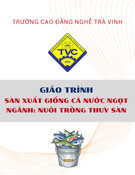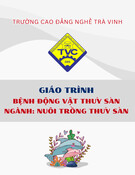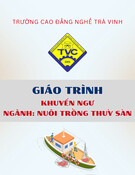
Vietnam Journal
of Agricultural
Sciences
ISSN 2588-1299
VJAS 2022; 5(1): 1336-1344
https://doi.org/10.31817/vjas.2022.5.1.03
https://vjas.vnua.edu.vn/
1336
Received: November 13, 2021
Accepted: February 19, 2022
Correspondence to
tmphu@ctu.edu.vn
The Use of Drugs, Chemicals, Herbs, and
Herbal Extract Products in Grow-out Farms
of Snakehead (Channa striata) and
Pangasius Catfish (Pangasianodon
hypophthalmus) in the Mekong Delta,
Vietnam
Nguyen Le Anh Dao1, Nguyen Quoc Thinh1, Vo Nam Son1,
Huynh Van Hien1, Nguyen Thanh Phuong1, Do Thi Thanh
Huong1, Bui Thi Bich Hang1, Marie-Louise Scippo2, Joëlle
Quetin-Leclercq3, Patrick Kestemont4 & Tran Minh Phu1
1College of Aquaculture and Fisheries, Can Tho University, Can Tho 9400, Vietnam
2Laboratory of Food Analysis, University of Lige, Liege 4000, Belgium
3Louvain Drug Research Institute, Pharmacognosy Research Group, Universit
Catholique De Louvain, Brussels 1048, Belgium
4Research Unit in Environmental and Evolutionary Biology, Research Institute of Life,
Earth & Environment (ILEE), University of Namur, Namur 5001, Belgium
Abstract
This study aimed to investigate the current use of drugs, chemicals,
herbs, and herbal extract products in grow-out farms of snakehead
(Channa striata) and Pangasius catfish (Pangasianodon
hypophthalmus) in the Mekong Delta, Vietnam. The survey was
conducted with a total of 60 Pangasius catfish grow-out farms in An
Giang and Dong Thap provinces, and 60 snakehead grow-out farms
in An Giang and Tra Vinh provinces. The results showed that
bacterial diseases were commonly reported by snakehead farmers (1-
4 episodes per crop) and Pangasius catfish farmers (1 to 12 episodes
per crop). Farmers used 12 types of single antibiotics and a mixture
of two antibiotics in Pangasius catfish, and eight types of antibiotics
in snakehead aquaculture. However, Pangasius catfish and snakehead
farmers used enrofloxacin and ciprofloxacin, which are banned
antibiotics according to the Vietnamese authority regulations. For the
use of herbs and herbal extract products, a variety of commercial
products were used by farmers which claimed different purposes for
use. According to the farmers, the quality and effectiveness of these
products were questionable. Some farmers used traditional herbs
following their experiences using traditional medicines for humans
and did not really know about the application doses. Thus, it would
be requested for in-depth studies on the use of herbs as on-farm
treatments, which would provide evidence for the use of herbs in the
industry.

Nguyen Le Anh Dao et al. (2021)
https://vjas.vnua.edu.vn/
1337
Keywords
Antimicrobial, herbal, Mekong delta, snakehead,
Introduction
In recent decades, Pangasius catfish
(Pangasianodon hypophthalmus) has become
one of the dominant species that is farmed
intensively in the Mekong Delta and has become
the major exporting product in the global seafood
market. The production of Tra catfish has risen
rapidly from 93 thousand tons in 2000 to 1.12
million tons in 2020 (Directorate of Fisheries,
2020). Snakehead (Channa striata) is one of the
common domestically consumed fish with a
production of 40,000 tons year-1 (Tran Hoang
Tuan et al., 2014). Snakehead is cultured mainly
in ponds, cages, and lined tanks in Dong Thap,
Vinh Long, Tra Vinh, and An Giang provinces
(Huynh Van Hien et al., 2011). However, with
these intensive culture practices, frequent disease
occurrences have been reported, including
bacillary necrosis of Pangasius (BNP), caused
by Edwardsiella ictaluri, and motile Aeromonas
septicaemia (MAS) in Pangasius catfish (Phan
et al., 2009; Phu et al., 2016) and bacterial
diseases and parasite infections in snakehead
(Pham Minh Duc et al., 2012; Nguyen Quoc
Thinh et al., 2020).
The increase in bacterial diseases and other
pathogens causing high mortality has negatively
impacted fish production and profits. The use of
chemicals and other compounds to control water
quality, improve digestibility, and treat diseases
have been popular in aquaculture (Nguyen Quoc
Thinh et al., 2014; Phu et al., 2016; Ström et al.,
2019; Nguyen Quoc Thinh et al., 2020). Twenty-
four types of antimicrobials were used to control
bacterial disease in Pangasius catfish, as reported
in a survey done in 2011 (Phu et al., 2016), and
five additional types in 2019 (Ström et al., 2019).
Also, other chemicals used as disinfects, herbs,
and probiotics are also used in Pangasius catfish
farming. For snakehead farming, seven types of
antibiotics and eight types of compounds for
disinfecting and controlling parasites were used
to control diseases during culture periods
(Nguyen Quoc Thinh et al., 2020). Information
on the use of herbs in aquaculture is limited.
The use of herbs or herbal products has not
been widely studied at the farm level. Garlic is
used to control bacterial diseases in aquaculture
due to its antimicrobial properties (Kim Van
Van, 2012). Adding Yucca schidigera extract has
been shown to enhance shrimp growth and
survival rates (Nguyen Phu Hoa, 2012). Other
researchers have explored the antimicrobial and
antioxidant properties of herbal extracts,
potentially for applications in aquaculture
(Bussmann et al., 2010; Tekwu et al., 2012;
Ocheng et al., 2014). However, information on
the use of herbs in Pangasius catfish
(Pangasianodon hypophthamus) and snakehead
(Channa striata) aquaculture has not been clearly
illustrated. The aims of this study were to
investigate the use of chemicals common in
aquaculture with a focus on the application of
herbal products and to provide background
information for further in-depth studies.
Methodology
The study was conducted from January to
April 2017 by interviewing 60 Pangasius catfish
farmers in Dong Thap and An Giang provinces
and 60 snakehead farmers in An Giang and
Dong Thap provinces, Vietnam. A total of 120
farmers were interviewed face to face. The
interviewed farms were randomly selected from
the list provided by provincial agriculture and
rural development offices. The semi-structured
questionnaire was piloted in two households in
each group and included technical information
(grow-out pond, input pond, stocking density,
year of farming, production, feed conversion
ratio, and training), disease occurrence (types of
disease and chemicals used), and information on
the use of herbal products (types of herbal
products, dosages, and modes of application).
Results were expressed in descriptive statistics,
namely frequency of occurrence, mean value,
and standard deviation, using Microsoft Excel
2010.

The use of drugs, chemicals, herbs, and herbal extract products in grow-out farms of snakehead and pangasius catfish
1338
Vietnam Journal of Agricultural Sciences
Results
General information about the catfish and
snakehead farms
The Pangasius catfish farmers had more
experience in fish farming compared to the
snakehead farmers (Table 1). This is because
catfish aquaculture began intensive farming in
2000 (De Silva & Phuong, 2011), whereas
snakehead aquaculture has been expanding for
less than ten years (Huynh Van Hien et al., 2011;
Tran Hoang Tuan et al., 2014). Pangasius catfish
fingerlings were obtained from the local places
in Dong Thap and An Giang provinces, which
had numerous catfish nurseries, while snakehead
fingerlings were transported mainly by truck to
Dong Thap province from grow-out farms in Tra
Vinh, 60 to 100km down-stream.
Although both types of farms had similar
stocking densities, the productivity of Pangasius
catfish was much higher than the snakehead. This
is because the total production of Pangasius
catfish was much higher than the total production
of snakehead (Tran Hoang Tuan et al., 2014;
Directorate of Fisheries, 2020). Checking for
antibiotics before harvesting and trading was a
common practice in Pangasius catfish
aquaculture compared to the much lower rate in
snakehead aquaculture, which can be explained
by the fact that snakehead is only traded to
middle-men and sold for domestic consumption
at local markets, whereas Pangasius catfish is
mainly exported. It should be highlighted for
attention that the fish produced for local markets
followed similar aquaculture patterns as other
fish produced for local consumption, e.g. red
tilapia (Tran Minh Phu et al., 2017).
Disease symptoms reported by Pangasius
catfish and snakehead farmers
Most farmers reported that bacillary necrosis
of Pangasius and motile Aeromonas septicaemia
were the two most common bacterial diseases in
Pangasius catfish (Table 2). This means that the
two main diseases had not been controlled in
previous years. The diseases also appeared often
during the flooding season with the frequency of
1 to 12 episodes per crop. Thus, catfish bacterial
disease control should be taken into account for
better fish production. Farmers had to use
antimicrobial compounds to treat the diseases,
although prevention methods were applied such
as feeding the fish immunostimulant products
and feed additive products. Pale gill and liver
syndrome and parasite infection also occurred
frequently, similar to the previous report of Phu
et al. (2016). Yellow fillet syndrome in
Pangasius catfish seemed to occur more
frequently compared to previous findings in
2011, in which less than 5% of farmers reported
it. Thus, fish health management practices in
Pangasius catfish farming need to have the
involvement of different stakeholders who can
contribute to the sustainable development of the
industry.
Motile Aeromonas septicaemia, body
hemorrhages, parasite infection, and liver
syndrome were the most common diseases and
symptoms reported by snakehead farmers (Table
2). However, the disease occurrences were less
Table 1. General information about the catfish and snakehead farms
Pangasius catfish
Snakehead
(n = 60)
(n = 60)
Years of farming (years)
10.6 ± 6.4
5.8 ± 3.5
Training (%)
75
60
Area of grow-out pond (m2)
5767 ± 3430
881 ± 354
Stocking density (fish/m2)
56 ± 24
56 ± 20
Feed Conversion Ratio
1.6 ± 0.2
1.28 ± 0.2
Harvest size (g/fish)
974 ± 338
811 ± 212
Checking antibiotic before selling (%)
86.7
3.3
Productivity (tons/ha/crop)
422 ± 162
152 ± 78

Nguyen Le Anh Dao et al. (2021)
https://vjas.vnua.edu.vn/
1339
Table 2. Diseases symptoms reported by catfish and snakehead farmers (%)
Reported disease symptoms
Pangasius catfish
(n = 60)
Snakehead
(n = 60)
Bacillary necrosis of Pangasius (BNP)
91.7
-
Motile Aeromonas septicaemia (MAS)
90
66.3
Pale gill and liver syndrome
60
-
Parasite infection
43.3
60
Yellow fillet syndrome
30
-
Liver syndrome
-
60
Fungi infection
-
11.7
Body hemorrhages
-
56.7
Abnormalities
-
78.3
Note: “-“: no report.
frequent than in the Pangasius catfish, with 1 to
4 episodes per crop. The bacterial diseases in
snakehead were caused by infections of
Aeromonas spp., Edwardsiella sp.,
Streptococcus spp., and Pseudomonas spp.,
while the parasite infections included
Gyrodactylus, Spinitectus, Pallisentis, and
protozoae (Trichodina, Apiosoma, Henneguya,
and Chilodonella) (Pham Minh Duc et al., 2012).
The findings were consistent with those of
Nguyen Quoc Thinh et al. (2020), who reported
similar disease symptoms in snakehead but more
cases in liver symptoms were reported (80%).
For Pangasius catfish, farmers applied
antimicrobials to control the motile Aeromonas
septicaemia, body hemorrhages, and liver
syndrome, while the parasites were controlled by
different chemicals.
Antibiotic use by catfish and snakehead
farmers
The number of antibiotics used in Pangasius
catfish included 12 types of single antibiotics and
a mixture of two antibiotics, fewer than reported
in 2011 (Phu et al., 2016) (Table 3). Compared
to a recent survey done by Ström et al. (2019),
five types of antibiotics were used by catfish
farmers including enrofloxacin. The more types
of antibiotics used by farmers in this study can be
explained by the higher number of interviews
(120, whereas in the survey of Ström et al.
(2019), only 13 farmers were interviewed in An
Giang province). Antibiotic use in snakehead
was similar to the survey of Nguyen Quoc Thinh
et al. (2020), in which eight types of antibiotics
were used. However, enrofloxacin and
ciprofloxacin, banned antibiotics according to
the Ministry of Agriculture and Development
(MARD), were used by both Pangasius catfish
and snakehead farmers (MARD, 2016). The
sources of these antibiotics were unknown
according to the farmers who obtained them from
a chemical company. According to Mai Van Tai
(2012), 28 antibiotics can be used in aquaculture
in Vietnam, while in the USA, only four types of
antibiotics have been approved for use in
aquaculture. The farmers reported that the use of
antibiotics was mainly based on their
experiences, and not on scientific testing of the
antimicrobial compounds. Thus, it is urgent to
optimize the use of antibiotics or develop better
regulations.
Chemicals, probiotics, and nutritional
products
Many types of chemicals were used to
disinfect water, control ectoparasites, and to
improve water quality (Table 4). Iodine and
BKC were widely used to disinfect water in both
catfish and snakehead ponds, whereas copper
sulfate and chlorine were used periodically to
control the ectoparasites in Pangasius catfish
twice a month. These practices were similar to
previous findings, meaning that the ways to

1340
Vietnam Journal of Agricultural Sciences
Table 3. Antibiotics reportedly used by Pangasius catfish and snakehead farmers (%)
Groups
Antibiotic
Pangasius catfish
Snakehead
(n = 60)
(n = 60)
Betalactam
Amoxicillin
40
36.7
Ampicillin
1.7
3.3
Cephalexin
13.3
1.7
Cefotaxime
3.3
-
Polymyxin
Colistin
10
-
Quinolone
Ciprofloxacin
8.3
6.7
Enrofloxacin
28.3
45
Levofloxacin
16.7
1.7
Aminoglycoside
Gentamicin
11.7
-
Tetracycline
Doxycycline
35
25
Oxytetracycline
20
10
Phenicol
Florfenicol
36.7
38.3
Mixture
Sulfonamide+ trimethoprim
28.3
8.3
Note: “-“: no report.
Table 4. The use of chemicals, probiotics, and nutritional supply products reported by Pangasius catfish and snakehead farmers (%)
Pangasius catfish
Snakehead
(n = 60)
(n = 60)
Disinfectant, ectoparasite control, and water quality improvement
Iodine
53.3
60
Copper sulfate
30
16.7
BKC
41.7
31.7
KMnO4
30
8.3
Lime
73.3
45
Chlorine powder
53.3
10
Glutaraldehyde
8.3
-
Salt
70
23.3
Internal parasite control
Praziquantel
23.3
70
Ivermectin
41.7
-
Mixture of minerals and vitamins
78.3
95
Probiotics
63.3
93.3
Note: “-“: no report
control parasites and water quality have not been
improved in recent years, and only chemicals and
water exchange for disinfection are used (Phu et
al., 2016; Nguyen Quoc Thinh et al., 2020).
Praziquantel was used in both species while
ivermectin was only used for catfish because it is
toxic to snakehead. Most of the farmers used
probiotics and feed additive products containing
vitamins and minerals, although the effectiveness
was not assured, as reported by the farmers.
Herbs and herbal extract products
Herbs and herbal extract products were
commonly used by Pangasius catfish farmers,

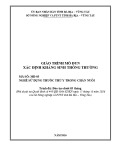
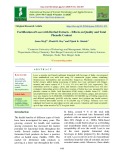
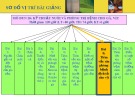
![Báo cáo kết quả thử nghiệm vắc xin phòng bệnh cúm gia cầm [Mới nhất]](https://cdn.tailieu.vn/images/document/thumbnail/2016/20160401/codon_10/135x160/6501459486152.jpg)
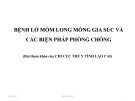
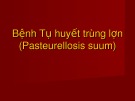


![Bài giảng Bệnh Phó thương hàn lợn [mới nhất]](https://cdn.tailieu.vn/images/document/thumbnail/2015/20151023/cocacola_05/135x160/4161445588151.jpg)
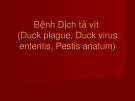




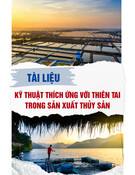
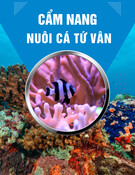
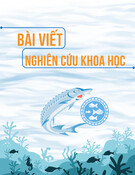
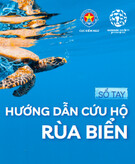
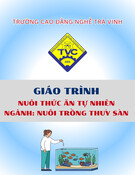
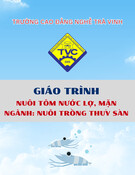
![Giáo trình Sản xuất giống tôm nước lợ, mặn (Trung cấp/Cao đẳng) - Trường Cao đẳng nghề Trà Vinh [Mới nhất]](https://cdn.tailieu.vn/images/document/thumbnail/2025/20251115/kimphuong1001/135x160/76031763179346.jpg)

